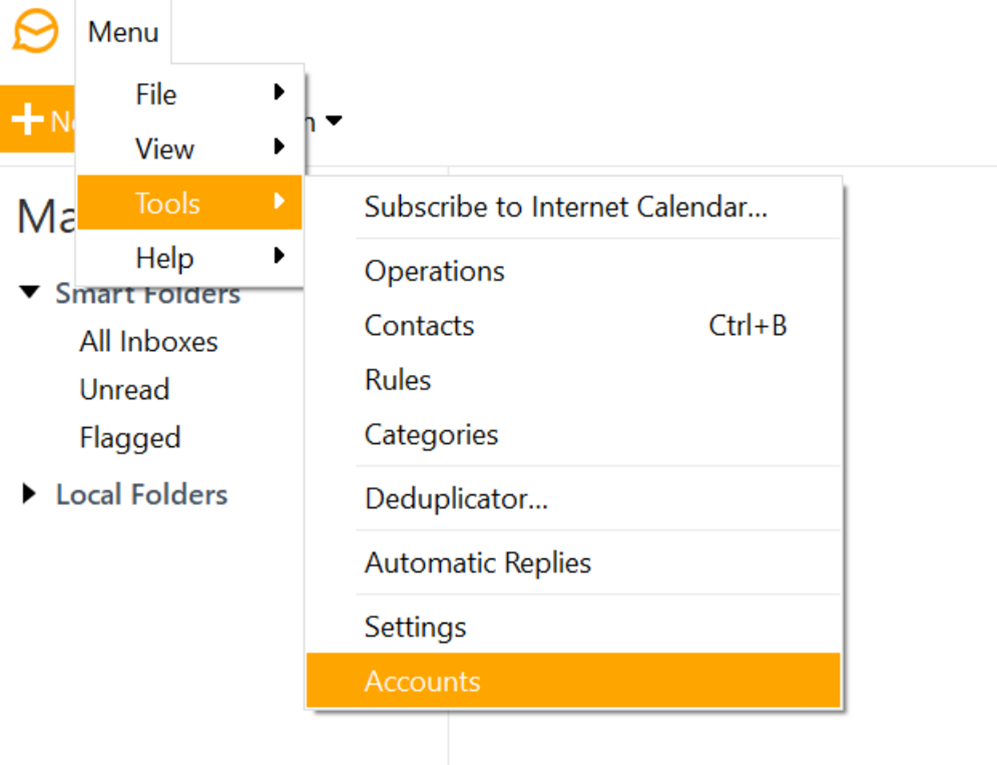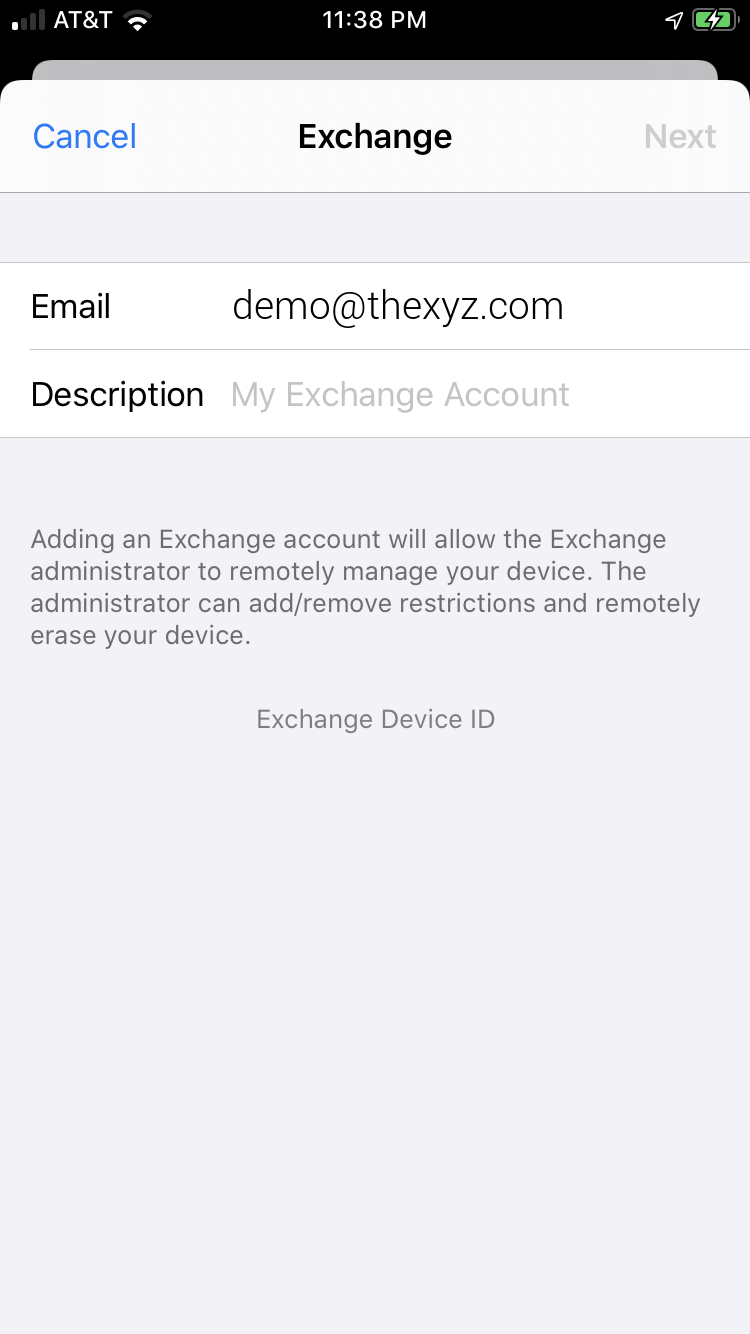-->
- Microsoft Exchange Settings Outlook 365
- Microsoft Exchange Settings For Android
- Microsoft Exchange Settings For Android
- Microsoft Exchange Email
Exchange ActiveSync devices are automatically reconfigured when a mailbox is moved from an Exchange on-premises organization to Microsoft 365 or Office 365. Exchange ActiveSync will find the new mailbox location in Microsoft 365 or Office 365 and update its configuration to talk directly to Microsoft 365 or Office 365. The Exchange ActiveSync device won't try and contact the on-premises Exchange server after it's been successfully redirected to Microsoft 365 or Office 365. With only a few exceptions (more on that below), the user no longer needs to manually set up their device for mail to keep working.

Click Account SettingsAccount Settings. Here, select the Exchange Account with the Server name you want to check and click Change. In the Server Settings section, you can see the full name of your Exchange Server. Outlook Web Access (OWA) email client can be used as well to know the Exchange Server address by launching it and navigating to. The Mail App on your iPhone can cater to different types of email accounts: basic email, Email Exchange, Google, etc. Below are the steps on how to set up your Email Exchange account: Step 1. Go to Settings on your iPhone. Select Passwords & Accounts. Select Add Account. Select Microsoft Exchange. Microsoft allows you to control your account your way with customizable privacy settings. Manage your Xbox, Windows, and other privacy settings on this page. The Microsoft 365 admin center is the web portal from which each company's service administrator can manage user accounts and settings for each of the Microsoft services to which they subscribe. From within the Microsoft 365 admin center, administrators can follow links to the Exchange admin center (EAC), where they can manage settings specific.
If you want to move a mailbox to Microsoft 365 or Office 365, see Move mailboxes between on-premises and Exchange Online organizations in hybrid deployments.
For more information about hybrid deployments, see Exchange Server Hybrid Deployments.
To use automatic redirection, your on-premises servers need to be running the latest releases of Exchange 2010, Exchange 2013, Exchange 2016, or later. You also need to have used the Hybrid Configuration wizard to set up your hybrid deployment. The Exchange ActiveSync redirection functionality uses the Outlook on the web target URL that's set on the organization relationship object. This object is configured when the Hybrid Configuration Wizard is run.
If your organization meets the requirements listed above, mobile devices should automatically be redirected to Microsoft 365 or Office 365 when a user's mailbox is moved, without any additional configuration. For the best experience, make sure your users' mobile devices are running the latest versions of their operating systems and e-mail clients. Some mobile devices, such as those running the Android operating system, might take longer than expected to be redirected. Additionally, some devices might not correctly interpret the Exchange ActiveSync 451 redirection instructions sent by Exchange. For these devices, users will still need to manually reconfigure or recreate their email account on the device. If you have questions about whether a device supports Exchange ActiveSync 451 redirection, contact the device manufacturer.
Automatic Exchange ActiveSync redirection isn't supported in the following scenarios:
Moving mailboxes from Microsoft 365 or Office 365 to an on-premises Exchange organization.
Moving mailboxes between on-premises Exchange organizations.
Moving mailboxes from Exchange 2007 servers to Microsoft 365 or Office 365.
Microsoft Exchange Settings Outlook 365
-->Problem
Office 365 users in your organization who connect to Exchange Online by using incorrect hardcoded service settings (or IP addresses) will be unable to connect to the service after these outdated service settings are discontinued on July 8, 2015. (The original date was June 26, 2015).
The services for which users may be using incorrect settings include the following:
- Autodiscover: A feature that's used to automatically discover server names for connectivity
- Exchange ActiveSync (EAS): A protocol that's used by email client applications on mobile devices
- POP3 and IMAP4: Protocols that are used by email client applications on desktop and mobile devices
- SMTP: Protocol that's used for sending email messages
If users continue to use the outdated, hardcoded service settings, they will be unable to connect to the service after July 8, 2015. Use the information that's provided in this article to make sure that these settings are set correctly for users in your organization.
Solution
The following table lists the features, protocols, and expected server settings that must be set, and provides links to the articles that contain instructions to configure these settings.
Microsoft Exchange Settings For Android

| Feature and protocol | Port | Server name(correct configuration) | References |
|---|---|---|---|
| Autodiscover (CName Record) | 443 | autodiscover.outlook.com | Create DNS records at any DNS hosting provider for Office 365 |
| Exchange ActiveSync (EAS) | 443 | outlook.office365.com | Set up a mobile device to synchronize with your account |
| POP3 | 995 | outlook.office365.com | Settings for POP and IMAP access for Office 365 for business or Microsoft Exchange accounts |
| IMAP4 | 993 | outlook.office365.com | Settings for POP and IMAP access for Office 365 for business or Microsoft Exchange accounts |
| SMTP | 587 | smtp.office365.com | Settings for POP and IMAP access for Office 365 for business or Microsoft Exchange accounts; How to Allow a Multi-function Device or Application to Send E-mail through Office 365 Using SMTP |
Windows uses a file that's named Hosts to map hostnames to IP addresses. This file is checked before DNS is used to resolve a server name. If the Hosts file on a Windows computer has an entry for any of the server names in the table, and if the entry is associated with a hardcoded IP address, DNS is not used to resolve that server name. Make sure that you reset the Hosts file on all such systems that may be experiencing the issue that's documented in this article.
For more information about how to reset the hosts file, see the following Microsoft Knowledge Base article:
972034 How can I reset the Hosts file back to the default?
Microsoft Exchange Settings For Android
More information
Microsoft Exchange Email
Still need help? Go to Microsoft Community.